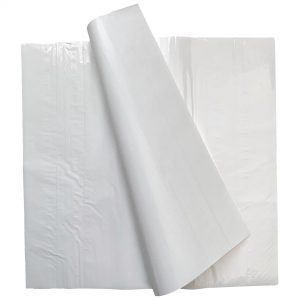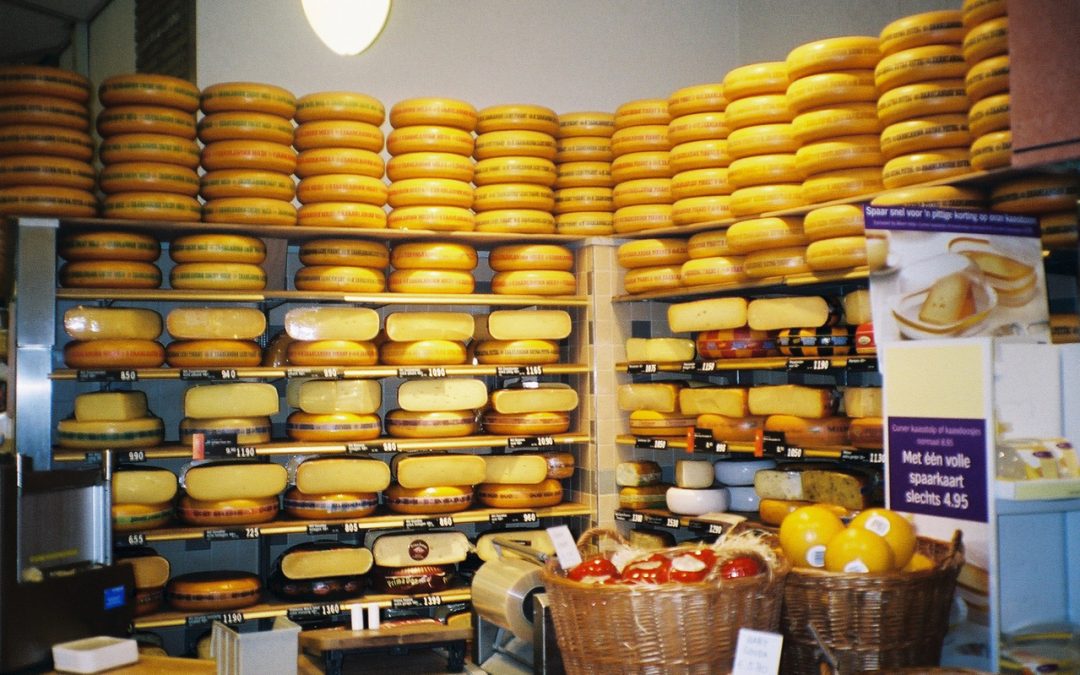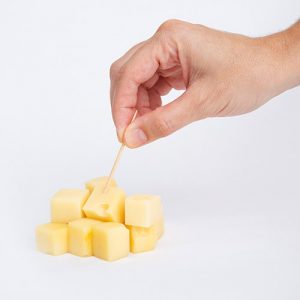Cheese is best eaten fresh; but you don’t rush to the grocery store to buy fresh cheese every time you need one. Chances are, you store that slice of unconsumed cheese in your refrigerator to use next time. It is important to store your cheese properly, so it stays fresh, delicious and mold free. Here are tips to make sure your cheese keeps its outstanding quality from the first bite to the last.
7 Tips in Keeping Cheese Fresh and Mold Free
 1. Use a Cheese Wrapping Paper
1. Use a Cheese Wrapping Paper
The best way to keep cheese fresh and mold free is by using cheese wrapping paper, parchment paper, or cheese bag. These wraps ensure that the cheese can “breathe”, but prevent unwanted air from entering the cheese.
Never use plastic wrap. It suffocates the cheese, making it trap moisture and lose flavor. Since cheese is also mostly fat and oil, the plastic wrap can cause your cheese to take on a plastic like flavor.
Aluminum foil could also cause the cheese to lose flavor and moisture. There are some types of cheese that contain levels of acid and salt. These can interact with the aluminum foil and ruin the cheese’s flavor.
2. Wrap the Cheese Properly
Don’t wrap your cheese too tightly or too loosely. If the wrapping is too tight, the cheese won’t be able to breathe and it may smell and taste like ammonia. If the wrapping is too loose, the cheese will dry out and harden.
3. Replace the Cheese Paper Every Time You Unwrap
Whenever you unwrap the cheese and take a portion of it, make sure you wrap it back in a new cheese paper. Using the same wrapping paper again will decrease the lifespan of your cheese. The reused wrapper won’t have the same breathable quality it had before. The risk of bacteria spreading from your finger to the reused wrapper is also there; since you would have inevitably touched the inner portion of the wrapping paper as you unwrapped the cheese. Using a new wrapping material helps maintain the natural balance of humidity in your cheese.
4. Don’t Touch the Cheese
Touching the cheese with bare hands (even when you’ve thoroughly washed them) would encourage the growth of mold. Always use a piece of plastic wrap or food grade hand gloves whenever you are handling the cheese. Also, make sure that the surface you are cutting on is clean. Molding happens when residues are left on the surface of the cheese.
5. Coat the Faces of the Cheese to Prevent Molding
Rub a light coat of olive or canola oil on the cut sides of the cheese. Though this method does not give a hundred percent guarantee that molds won’t grow on your cheese (especially if you’re not storing it properly), it helps you easily remove the molds from the cheese. Since the mold will begin on the oil and not on the cheese, you can simply wipe it off with a paper towel.
6. Label the Storage Date
Labelling the cheese with the date when you wrapped and stored it will help remind you how long the cheese has been stored.
7. Store in the Cheese/ Vegetable Drawer
Store the cheese separate from any aromatic food in your refrigerator’s cheese or vegetable drawer. Cheese easily absorbs other flavors, so putting it near other foods in the fridge will affect its taste and quality. Avoid keeping the cheese in the freezer, too. Freezing degrades the texture of the cheese.
Keeping Soft and Hard Cheese Fresh
Soft cheese like feta, cream cheese, ricotta, Roquefort, gorgonzola and cottage cheese need some exposure to air so it doesn’t become too moist. To keep it fresh and to retain its creaminess, you can use a bell jar or a cheese dome to cover your soft cheese as you store it in the fridge. The bell jar ensures proper humidity for the cheese.
Hard cheese, as the name suggests, are firm, but savory. There are also cheeses that are considered semi-hard. When storing hard and semi-hard cheese like Parmesan and Gouda, you would want to make sure that it doesn’t dry out too much in the refrigerator. Using cheese wrapping paper and sealing it with the tape should keep your hard cheese fresh.
Avoid putting your cheese in airtight containers. They are not ideal for storing semi-soft and hard cheese.
What to do if the Cheese already has Molds?
Unless your cheese is blue, you wouldn’t want to eat it with molds. Molds are microscopic fungi that grow in warm and moist conditions. They can spread to the cheese and contaminate it. Molds can cause allergic reactions. They also have poisonous substances that can make you sick.
When you notice molds on your soft cheese, it is best to throw it right away. Molds can quickly penetrate through the cheese, so your soft cheese may be beyond saving. However, hard cheese can still be saved by either slicing or scraping the area with molds using a cheese knife. You will lose a portion of your cheese, but it is the best way to prevent the molds from spreading to the entire cheese.
How Will You Know the Cheese has gone Bad?
There is a possibility for cheese to go bad even before the expiration date on its label, especially if it wasn’t stored properly. The shelf life of cheese depends on its moisture content.
If molds have penetrated your cheese, then it can’t be redeemed just by slicing or scraping off the area. It is safer to throw it away. If the cheese smells or tastes rancid or stale, it definitely has gone bad.
So you don’t store cheese in your fridge for long periods of time, buy in an amount that’s just enough for a few weeks’ consumption. In buying small portions, you can make sure that the cheese you have is fresh and is still in its optimal quality, especially in terms of taste and texture.







